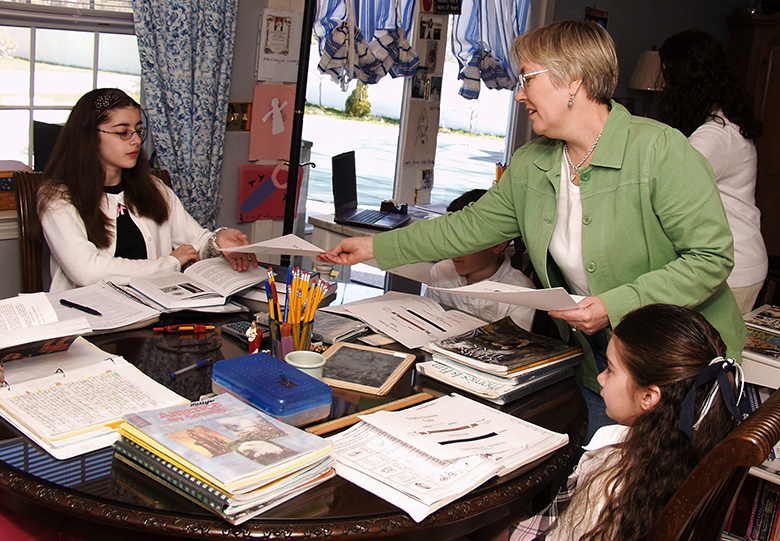Kids Learn Environmental Lesson in Backyard
Home schooling is a growing trend. Both the parents and the children need to prepare for the new lifestyle of learning in the home. Parents will often learn material along with the child. To accomplish complete learning, families team up with each other, and video and computer courses are used as well. Courses at local junior colleges are offered to high school students so that curriculum of the homeschooling is met.
The popularity of home schooling has triggered the creation of hundreds of organizations, never mind the thousands of web sites. Parents taking on the challenge of home schooling their children take on a tremendous responsibility. It is very demanding and time consuming.
How does home schooling education differ from the public school education? Children do not have to sit in a classroom; they are able to learn wherever their teacher takes them. Lessons are taught at the dining room table, in the back yard, at the museum and anywhere else they may want to travel. Parents who home school their children are looking for variety in educating their children while at the same time fulfilling the educational criteria requirement.
Homeschooling is more than just sitting down with books for a couple of hours. There are experiments and projects to be done, lessons to prepare, papers to grade, field trips, park days, music lessons, and the list goes on.
Remember when you were a child and your school announced a “field trip,” and how excited you were? Children who are home schooled will actually admit they are having fun while learning. Between the field trips and flexible schedule, albeit hard work, home schooled children are receiving a well-deserved education.
Pump Grump received a call requesting septic tank pumping services by a customer who home schools her children. She requested that we schedule the pumping service around her children’s schooling schedule. It occurred to us that we could not only provide the septic maintenance services, but we could also provide an educational piece that would meet the environmental science curriculum to the children by educating them on how septic systems work.
A lesson plan was designed and then presented to the children at their dining room table. “What happens when you flush that toilet?” This question brought giggles, of course. “What, besides dishwater, goes down the kitchen sink drain?” Asking these and other questions helped the children to understand what a septic system consisted of and how it worked. They learned that it is a living system, that it needs bacteria to work properly, and that it needs to be cared for.
The next part of the lesson was to watch (and smell) their septic tank being serviced. Before stepping outside to see the “Grump” in action, I explained the procedures that would be used and why they are so important. A couple of the children held their noses and made faces, but all in fun. Not only did they learn the importance of caring for a septic system, they also learned how a septic system affects the environment.


